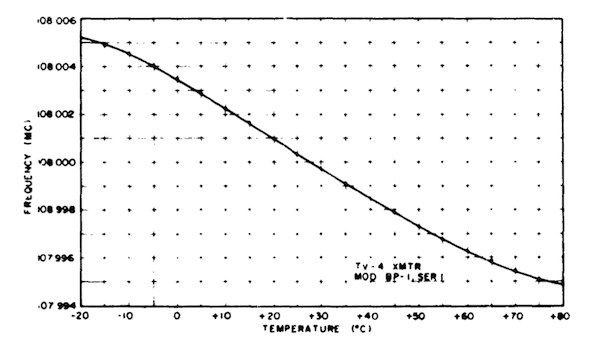Vanguard 1 Transmitter
ID: 344465
Vanguard 1 Transmitter
24.Mar.14 00:32
12772

Ask a kid to draw a satellite, and he will draw a sphere with antennas that come out from all sides.
Vanguard 1 was the second satellite successfully launched by the US space program on March 17, 1958, following the launch of Sputnik I by the former USSR on October 4, 1957. Vanguard 1 was renamed "Grapefruit Satellite" for its dimensions: a little 6.4 inch sphere.

The first attempt to launch a Vanguard satellite on December 6, 1957 ended in a disaster: the rocket exploded on live TV on the launch pad. Vanguard TV-3 (Test Vehicle #3, now on display at the National Air and Space Museum) was thus renamed "flopnik", "kaputnik"...
Looking in books and on the net about how it was done the transmitter, I was able to read the various reports of NASA and, lately, also the almost complete series of Vanguard Project Reports available on DTIC.
I found a lot of information , but as it was built the transmitter, nothing.
Some wiring diagrams had already been published even in 1959 (see CQ, May 1959, semiconductors by W6TNS, page 70), together with the schematic diagram of the Explorer 1 beacon transmitter.
On the book "Exploring by Satellite: the story of Project Vanguard" of F.M.Branley (1957), I found an illustration of the iphotetical transmitter. With the benefit of hindsight, this corresponds to a prototype of one of the two transmitters aboard the Vanguard 1.

Satellite Telemetry Transmitter (drawing by H.K.Wimmer, 1957)
One of the two transmitters operated with a single Western Electric GF-45011 transistor with an output power of 5 mW and was powered by solar cells. Total power delivered by the solar array was about 1 watt, and the system worked without failures for over six years.
The crystal of this transmitter was mounted in direct contact with the skin of the satellite, with the purpose to determine the external temperature as a function of the transmitted frequency. As an example, this is the graph which illustrates the frequency variations due to the crystal temperature of the transmitter of satellite TV-4 (Test Vehicle #4).

Frequency-temperature characteristic of TV-4 transmitter
(Vanguard Project Report no.21, pag.3, 1957)
After additional extensive research, and exploring image by image one of the numerous books found on the web which referenced the Vanguard 1, I found in an inset of a photo what they called "Vanguard satellite continuous-wave transmitter and telemetry payload".

Vanguard satellite continuous-wave transmitter and telemetry payload
(GPS Timeline and Bibliography, 2009 - Naval Research Laboratory
NRL/MR/1001-09-8988, page 18)
Finally! I quickly realized that this was the photo of the transmitter so that I had tried. The image, though small, was very detailed. You notice the crystal (thermally isolated), the transistor Western Electric GA-53233 with its socket, the coil, the tuning capacitor, and the various other components, all according to the schematics already known for some time. Output power was in the order of 10 mW at the nominal frequency of 108 MHz.
This circuit diagram was near equivalent to the oscillator stage of the 80 mW, 2-transistors telemetry transmitter designed for the Vanguard 2. This is the original drawing (oscillator section), with detailed notes on how to wound the coils. Copy quality of the original documentation is very low.

Oscillator section of the "Modified Minitrack satellite telemetering transmitter circuit"
(Project Vanguard Report no.15, 1957, pag.11)
Some details on the transistors used in these transmitters. Jack Ward, curator of the Semiconductor Museum published an interesting note on the early Western Electric transistors used in the first US satellites. I wrote to him, sending in the image of the tiny transmitter. He was very interested and will update as soon as possible his article.
Some radioamateurs are designing replicas of the Vanguard transmitters. All references and many other informations can be found on the blog of M.J.Rainey, on the section dedicated to the Vanguard transmitters.
73 de IZ8YRR
AMSAT Italy member
To thank the Author because you find the post helpful or well done.